When many of us think of fitness assessments, memories of school-day Presidential Fitness Tests come to mind. While these annual measurements didn’t offer much in the way of real insights, testing our fitness capacities as adults does have its place.
“Fitness testing allows someone to assess where they fall on the training continuum so they begin in a [training] phase that is challenging and safe but not physically or emotionally overwhelming,” says Life Time personal trainer Billy Anderson, NASM. “Assessments provide validation and feedback that the program is creating measurable, positive change.”
To really assess your strength, conditioning, power, and mobility, it’s important to shift the focus from performance on the test to analysis of the results. The goal of testing isn’t to make anyone feel inferior but to offer guidance on how to move the dial.
The payoff is a heightened awareness of how you move — and knowledge of the steps you can take to improve.
“Testing helps keep us motivated,” says physical therapist and trainer Erika Mundinger, DPT. “It helps keep us honest, and it helps us understand our benchmarks for what we need to achieve. It shows us the barriers that might be holding us back, or the progress we’re making toward those goals.”
Mundinger offers three tests — one each for muscular endurance, power, and mobility — that you can use to assess without judgment, repeat as part of your training, and progress over time.
Perform one or more of the tests (depending on your goals) once a month. Record the results and spend the time in between tests working toward improving.
Muscular Endurance Test
Pushups
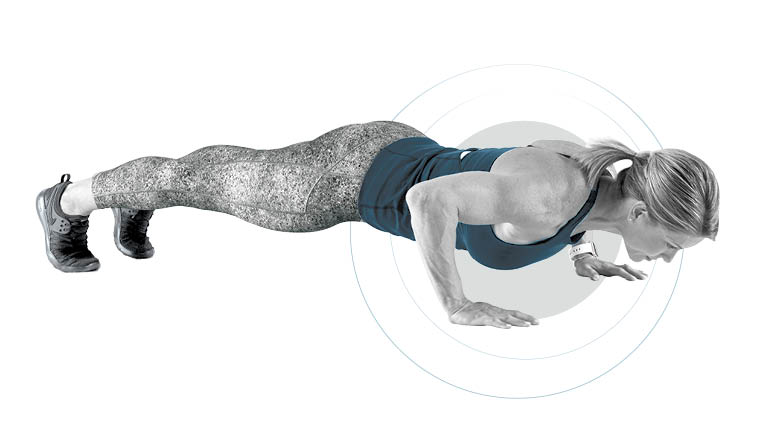
This fundamental move calls for more than just arm strength; it requires strength in the chest, back, core, glutes, and quads, as well as stability in the wrists and shoulders. All of these parts must work together to maintain what is recognized as ideal pushup form — a straight line from head to heels — throughout the exercise.
How to Test: Assume a plank position. Bend your elbows to lower yourself with control until your arms bend to 90 degrees or deeper. Press through your hands to rise back up.
Perform as many pushups as you can without sacrificing form. If you can’t do one great-form pushup with your hands on the floor, elevate your hands on a bench, table, countertop, or wall. Avoid berating yourself for elevating your hands and focus instead on the task at hand: getting stronger.
How to Assess: Record the number of reps and the pushup variation you performed. Over time, you will see improvements in both of these. Let’s say the first time you test you are able to do 10 great-form pushups with your hands elevated on a weight bench. Eventually, you might be able to perform more reps with your hands elevated, or you might find that you can maintain the same great form and rep count with your hands on a lower box or on the floor. These are both signs of improved strength.
How to Improve: Perform three sets of a challenging 10 repetitions, three times each week. On nonpushup days, hold a plank position for 30 seconds.
For more pushup tips, variations, and progressions, visit “BREAK IT DOWN: The Pushup“.
Power Test
Box Jumps
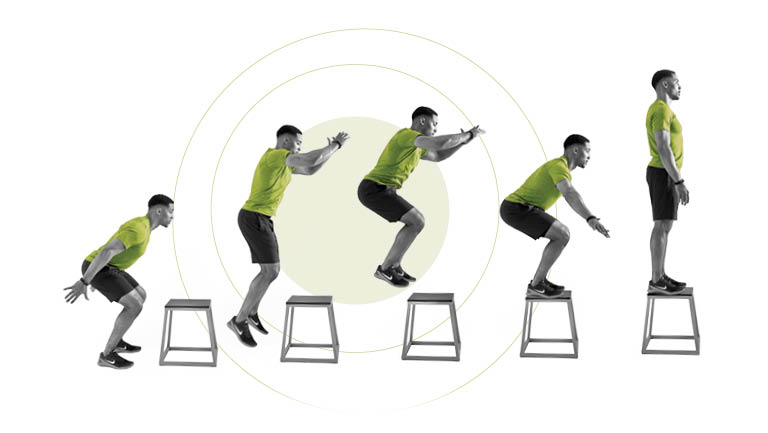
In fitness, “power” refers to explosiveness — the ability to move weight with speed. The box jump is a great way to test and train lower-body power. It requires the ability to use power from your legs to jump up; to achieve triple-extension of your hips, knees, and ankles; and to land softly and with control.
How to Test: Stand with your feet at hip width about a foot behind a sturdy elevated surface, such as a weight plate or plyo box. Hinge your hips and lower into a mini squat.
Explosively reverse the motion — swing your arms forward for added momentum to jump up and forward with a powerful hip drive. Land gently with knees soft, then straighten your legs and drive through your hips to stand tall.
Step down and repeat for as many controlled, great-form reps as possible in one minute. If you feel your form eroding — or miss a rep — before the minute is complete, stop there.
How to Assess: Record the height of the platform — whether it’s 4 inches, 12 inches, or 36 inches. As with elevating your hands in a pushup, selecting an appropriate height ensures safety and the opportunity to measure progress.
Additionally, record how many reps you completed. Over time, you likely will be able to complete more repetitions, jump to a higher platform, or both.
How to Improve: Practice box jumps a couple of times a week, performing two or three sets of eight reps. Pay particular attention to fully extending the hips as you jump and to landing with control on each repetition.
Other ways to improve lower-body power include powerful step-ups, kettlebell swings, and the Olympic lifts — snatches and clean-and-jerks.
For more tips on improving box-jump prowess, including alternatives to the move, visit “BREAK IT DOWN: The Box Jump“.
Mobility Test
Overhead Squats
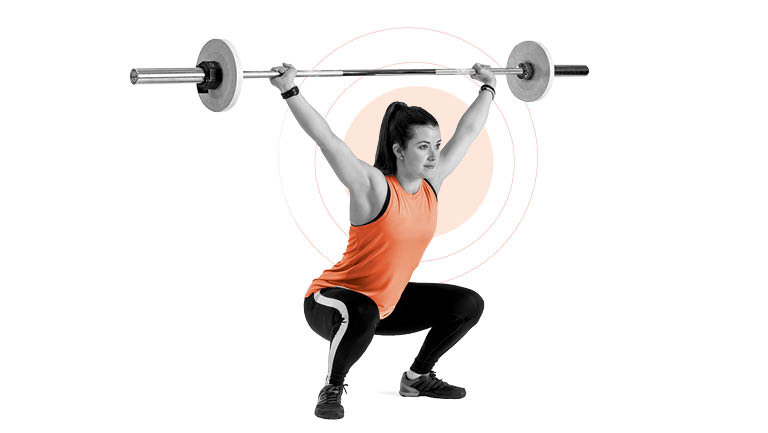
This full-body move requires mobility in your shoulders, hips, and ankles, and stability through your upper back, core, glutes, and adductors. It is useful for assessing weakness, immobility, and muscular imbalance — and for improving overall mobility.
Strive to avoid leaning too far forward or letting your knees move inward or heels rise from the floor. Don’t let the weight track behind your body as a counterbalance. For the purpose of testing mobility, use a light implement (a dowel rod, PVC pipe, or empty barbell) and focus on form, not how much weight you can lift.
How to Test: Stand with feet at shoulder width, toes pointed slightly out, and take a wide, shoulder-width-and-a-half grip on the rod, pipe, or barbell. Press or snatch the weight overhead with chest proud, arms locked out, and shoulders engaged.
Brace your core and squat down as far as you can with control. Continue to engage your core, glutes, and shoulders as you return to standing.
How to Assess: The number of reps you can perform and the weight you carry isn’t as important as improving your form. Consider recording a video of yourself and look for the following: If your chest drops, it may signal a weak core. If you can’t keep your arms overhead and in line with your torso, it could mean limited shoulder mobility. If your heels lift, ankle immobility may be the culprit. If your knees collapse inward, hip strength is a likely issue.
How to Improve: Depending on the results of the test, you may want to incorporate shoulder- or ankle-mobility work, core- or hip-strengtheners, or some combination of these efforts. You can also add variations of the overhead squat into your warm-up or workout.
Trainers often recommend ditching tools that hold the hands in a fixed relative position in favor of dumbbells or kettlebells that unlink the hands — or simply perform the move with just body weight, one arm extended overhead at a time.
For more tips on improving your overhead squat, see “BREAK IT DOWN: The Overhead Squat“.
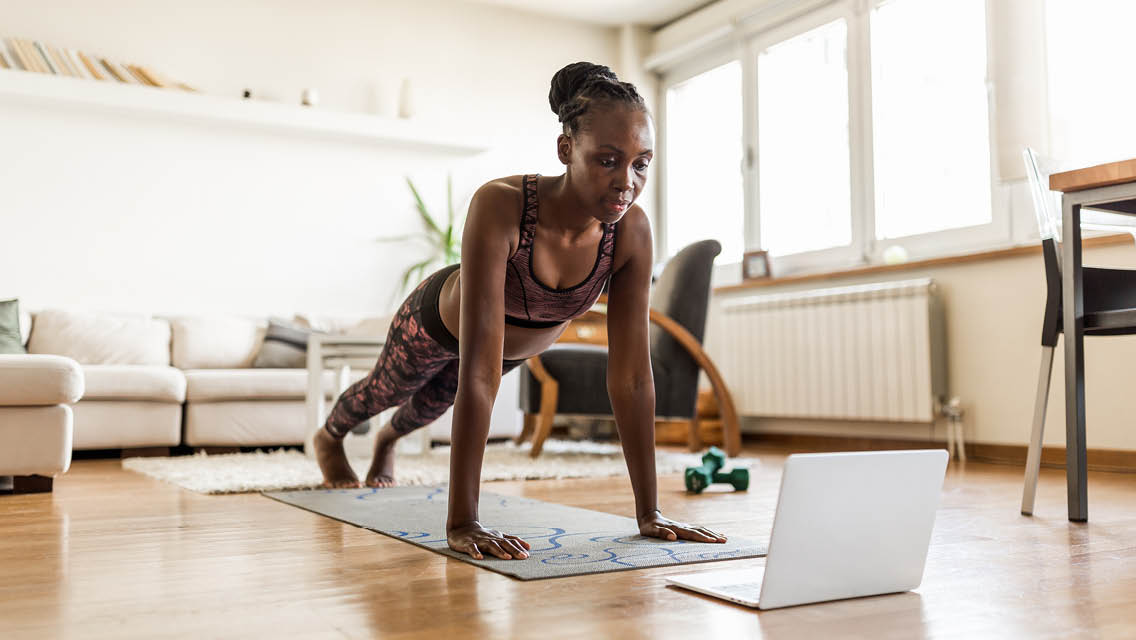


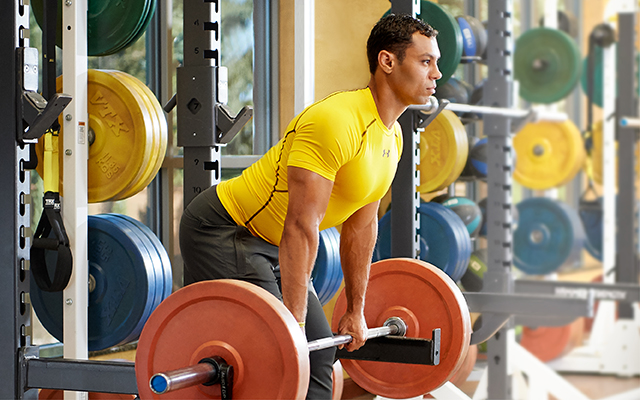
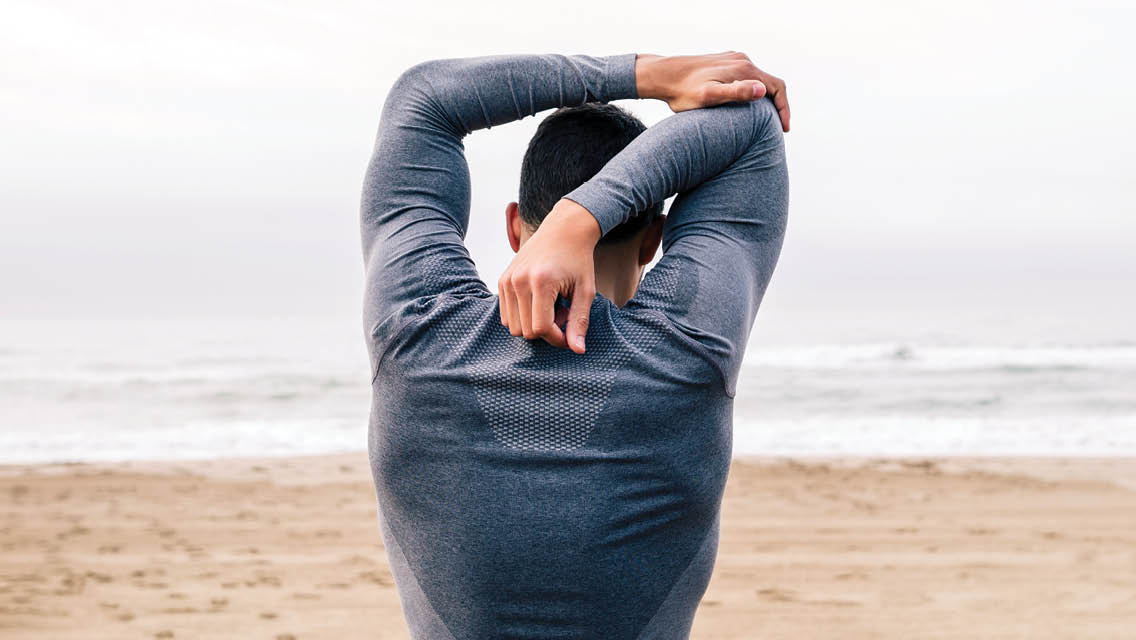

This Post Has One Comment
The major issue I find is that the fitness assessments don’t have related age benchmarks .I am 76 years old . I’m sure I would not be able to complete most of assessment exercises .just based on my age .I’ve worked out 3 days a week for almost 3 years and consider myself in fairly good shape (have done a 6+ minute plank and leg press 400 lbs.) ,but using the assessments described in the article would not be a fair measure of my capabilities .